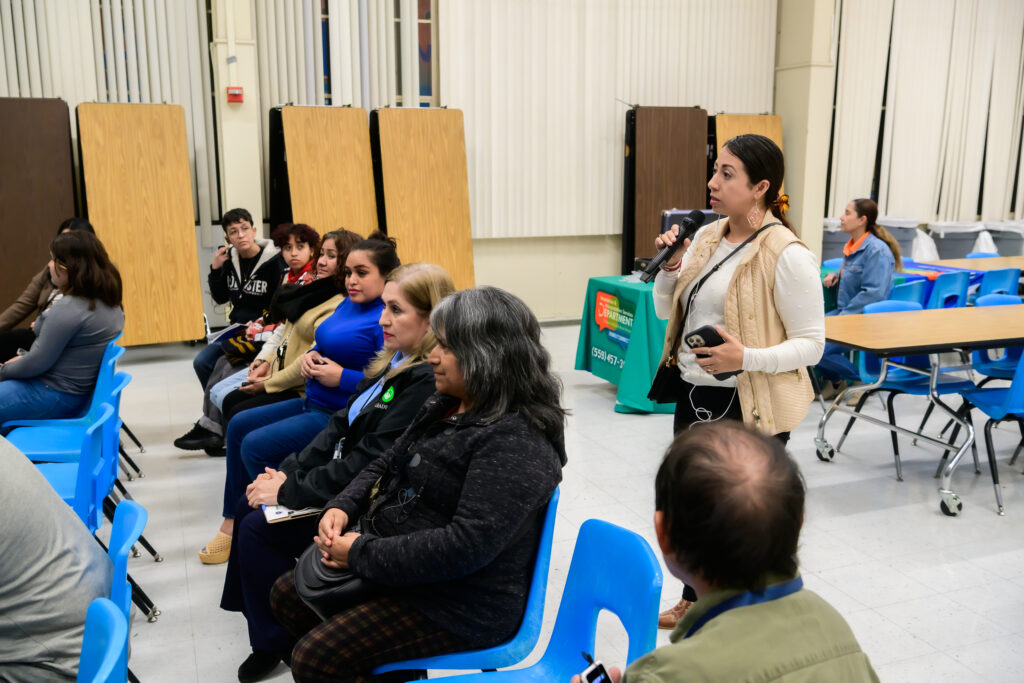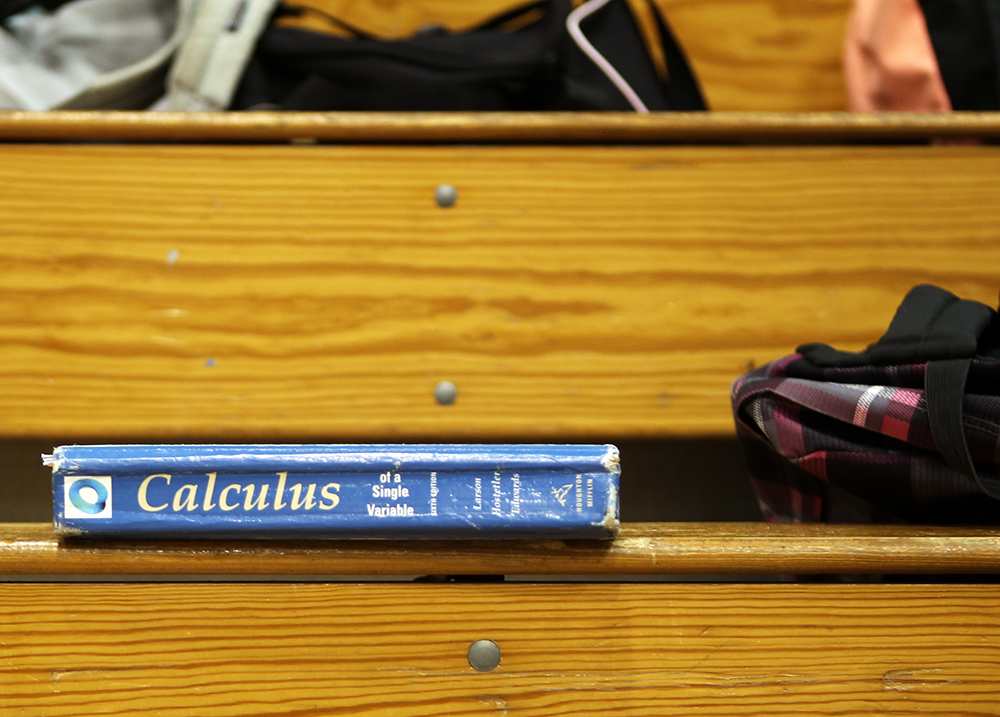
Credit: Alison Yin / EdSource
In pursuit of narrowing cavernous gaps in student achievement, Gov. Gavin Newsom this year made changes to the Local Control Funding Formula, the state’s school funding law, that are among the most far-reaching since the law’s adoption a decade ago. School districts are bracing for the extra paperwork and demands.
Newsom’s directive requires that starting in 2024-25, districts and charter schools spell out how they will address poor performance and target funding for improvements in every school where one or more of the state’s 13 student groups rank red — the lowest of five performance bands on the California School Dashboard. Until now, state law required only improvement efforts for districts as a whole.
The revision was made in the language of the governor’s proposed state budget in January. It was discussed in legislative budget subcommittees as one of many items in the education budget but didn’t receive a separate and detailed review.
Last week, the State Board of Education implemented the changes with regulations on what school districts must do to raise the achievement of the schools’ lowest-performing students. They include setting specific goals, committing to actions and spending to achieve them, and a new requirement — determining how to measure if those strategies are effective by the end of three years and what to do if they aren’t.
Before they voted, board members heard repeated warnings from dozens of superintendents and school district administrators that piling on more extensive documentation would make districts’ three-year strategic plans, called the Local Control and Accountability Plans, unbearably long and unreadable.
“In smaller school districts, where time and resources are already significantly limited, the current requirements of the LCAP add an undue burden,” Helio Brasil, superintendent of Keys Union School District, a two-school district in Stanislaus County, wrote to the board.
“In my experience, every addition of a new table or box or check box or prompt to the LCAP makes it less and less useful as the tool to promote equity-focused, locally informed strategic resource allocation,” Joshua Schultz, deputy superintendent of the Napa County Office of Education, testified. “Already, practitioners in the field will tell you that the LCAP document is not useful for informing and engaging educational partners because of its length and complexity.”
Equity multiplier schools
Included in the revisions is a new category of “equity multiplier” schools serving many of the state’s most vulnerable students. Among the factors for their selection are the proportions of students from low-income families and parents lacking a high school diploma, and school stability — the rate of student transience. Many will likely be small alternative high schools serving students who have been expelled, bullied and struggled at standard high schools or are at risk of dropping out.
The idea was initially proposed by Black educators through a bill authored by Assemblymember Akilah Weber, D-San Diego, to dedicate $300 million to improve the achievement of Black students as the lowest-scoring student group on the dashboard. Newsom agreed to the new level of funding, but, concerned about violating Proposition 209, the 1996 voter initiative that bans affirmative action in public schools, he broadened the idea. The money will require districts to address and fund the specific needs of any lowest-performing student group on any dashboard indicator — whether math scores or absenteeism and graduation rates — and create overall goals for a school. Weber and the California Association of African American School Administrators endorsed the final plan.
The schools have yet to be designated, but the California Department of Education is projecting there could be 1,000 schools. Many will likely have student groups performing in the red and will have to address them like other schools. But equity multiplier schools additionally will be eligible for technical help from designated county offices of education and their share of the extra $300 million, based on student enrollment.
Intense focus on school spending
While not providing explicit funding for each student group, districts are held accountable for their performance. Student groups are determined by race and ethnicity, family income, students learning English, students with disabilities, and foster and homeless youth. Next month, the California Department of Education will release the 2023 dashboard, with color ratings for the first time since Covid interrupted testing in March 2020.
The statutory revisions will mark a major shift in attention and accountability for the billions of dollars in extra “supplemental” and “concentration” money that the funding formula provides to districts annually based on the enrollment numbers of English learners and low-income, homeless and foster students.
The state already reports in the dashboard every school’s test scores and other indicators of student performance. Some districts funnel supplemental and concentration dollars directly to high-needs schools, as Los Angeles Unified does through its Student Needs and Equity Index. But the state steers funding formula dollars only to districts, which in turn determine how the funds are spent: which schools get tutors, extra counselors, teacher training or additional aides. Districts determine whether supplemental and concentration dollars are given to schools or through the central office. Districts are not required to track supplemental and concentration funding by school.
Stepped up accountability
The revisions indicate Newsom agrees that either not enough funding reached the schools where high-needs students attended or funds were spent ineffectively.
“The experience of the past decade is that we haven’t seen districts consistently identify schools with specific needs and take actions tailored to those needs,” said Brooks Allen, an adviser to Newsom and executive director of the State Board of Education.
There has been overall progress in raising graduation rates and cutting suspension rates statewide. But the vast differences in proficiency rates on state test scores between Black (17% in math in 2023), white (48.2% in math) and Asian students (70% in math) have not narrowed, and absenteeism rates remain disproportionately high among Black and Hispanic students.
“Newsom is saying we should move faster and stronger to close gaps in outcomes,” said John Affeldt, managing attorney for Public Advocates, a public interest law firm, one of the advocacy groups that called for the changes that Newsom adopted.
The latest iteration of the LCAP template is at least the sixth in the past nine years. The state board designed the LCAP both as a strategic plan for district improvement and as an accountability tool to verify that districts are directing the $13 billion in supplemental and concentration funding to students for whom it was intended.
Over time, the goals of accessibility and transparency have worked at cross-purposes. A previous iteration, for example, eliminated a potentially huge spending loophole, which the California State Auditor and Public Advocates identified, allowing districts to dump unspent supplemental and concentration dollars into their next year’s general fund to spend for any purpose on all students. Fixing it required adding yet another section to the LCAP accounting for the unspent money from year to year.
A challenge to follow the money
The Legislature hasn’t dedicated funding for research or evaluations to determine whether the funding formula was working. Consistent with his view that legislators should not meddle with local control, former Gov. Jerry Brown, the funding formula’s architect, made it difficult to compare districts’ spending from the funding formula and fought proposals to standardize spending through accounting codes.
Despite the obstacles of limited data, researchers have persisted and found evidence for optimism and skepticism. In separate research studies, both UC Berkeley labor economist Rucker Johnson and Public Policy of Institute of California research fellow Julien Lafortune concluded that the funding formula succeeded in creating a much more equitable finance system and worked as designed for those districts getting the most extra money — those in which low-income students and English learners account for at least 95% of enrollment. Johnson calculated that a $1,000 increase in per-student funding, sustained for three consecutive years in the highest-poverty districts, produced significant increases in math and reading scores.
But Lafortune, in an analysis he co-authored this year, also found that 60% of districts do not report spending on high-need students at or above the level of supplemental and concentration funding they receive. His 2021 research found that statewide only about 55% of supplemental and concentration dollars reached school sites whose students generated the funding, although some of the remaining money could have funded districtwide activities benefiting those schools.
Thus, there have been increasing calls from advocates for low-income students for more fine-grained reporting on spending.
“We don’t report in a standardized way how much we spent at a school site. Getting that would go a long way to build trust that districts are doing what the policy intended,” said Rob Manwaring, senior policy and fiscal adviser for Children Now.
Despite efforts by California Department of Education staff to eliminate redundancies, combine goals for multiple equity multiplier schools, and convert spending listings into data tables, the latest version will undoubtedly lengthen LCAPs that already are often several hundred pages for medium and large school districts, and will take extra labor to complete.
The LCAP instructions will increase from 45 to 57 pages. Districts will have to engage parents, students, and teachers in every equity multiplier school and document how the engagement shaped goals and actions. Districts will add dozens to hundreds of entries for schools with student groups in the red.
“No one wants to fill out paperwork for the sake of it,” said Allen. “But if the result leads districts to conduct further needs and data analyses, and not a compliance exercise, the result could lead to positive change and better support for kids who need it most.”
Representatives of advocacy groups who had been calling for more transparency in the LCAP expressed support for the revised template. “The governor’s proposal, combined with other improvements, would get California closer to ensuring equitable educational opportunities and outcomes,” wrote Guillermo Mayer, president and CEO of Public Advocates, and Christopher Nellum, executive director of The Education Trust-West, a nonprofit organization, in an EdSource commentary earlier this year.
In letters and comments to the state board, no superintendent or lobbyist for school groups commended Newsom’s decision to strengthen the funding formula law and add a new category of highest-need schools. Instead, celebrating seemingly small victories, many praised Department of Education administrators for holding the line by making only those changes to the template that were required by law. They also called for additional efforts to slim down the LCAP.
Advocates and school administrators are hoping that software engineers from Silicon Valley and artificial intelligence will somehow resolve their differences. They’re assuming an interactive, electronic template can reduce confusion and duplication with links to both AI-generated LCAP summaries for curious parents and detailed financial data for accountability hawks.
“I’m sure there’s technology out there that can help to take that large document that’s now being streamlined and put it into an even more user-friendly format for those who desire (it),” said state board Vice President Cynthia Glover Woods, who, she said, had read more than her share of LCAPs as chief academic officer of the Riverside County Office of Education.
The idea of an electronic fix has been mentioned for several years — so far to no avail.






